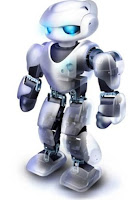The Komodo dragon is the world's heaviest lizard, weighing 150 pounds or more. It has grey scaly skin, a pointed snout, powerful limbs and a muscular tail. It lives in the scrub and woodland of a few Indonesian islands. They use their keen sense of smell to locate decaying animal remains from several miles away. They also hunt other lizards as well as large mammals and are sometimes cannibalistic. This species is threatened by hunting, loss of prey species and habitat loss.
 Reaching 10 feet (3 meters) in length and more than 300 pounds (136 kilograms), Komodo dragons are the heaviest and largest lizards on Earth. They have long, flat heads with rounded snouts, scaly skin, bowed legs, and huge, muscular tails.
Reaching 10 feet (3 meters) in length and more than 300 pounds (136 kilograms), Komodo dragons are the heaviest and largest lizards on Earth. They have long, flat heads with rounded snouts, scaly skin, bowed legs, and huge, muscular tails.
As the dominant predators on the handful of islands they inhabit, they will eat almost anything, including carrion, deer, pigs, smaller dragons, and even large water buffalo and humans. When hunting, Komodo dragons rely on camouflage and patience, lying in wait for passing prey. When a victim ambles by, the dragon springs, using its powerful legs, sharp claws and serrated, shark-like teeth to eviscerate its prey.
The Komodo dragon's teeth are almost completely covered by its gums. When it feeds, the gums bleed, creating an ideal culture for virulent bacteria. The bacteria that live in the Komodo dragon's saliva causes septicemia, or blood poisoning, in its victims. A dragon will bite its prey, and then follow it until the animal is too weak to carry on.
Animals that escape the jaws of a Komodo will only feel lucky briefly. Dragon saliva teems with over 50 strains of bacteria, and within 24 hours, the stricken creature usually dies of blood poisoning. Dragons calmly follow an escapee for miles as the bacteria takes effect, using their keen sense of smell to hone in on the corpse. A dragon can eat a whopping 80 percent of its body weight in a single feeding.
There is a stable population of about 3,000 to 5,000 Komodo dragons on the islands of Komodo, Gila Motang, Rinca, and Flores. However, a dearth of egg-laying females, poaching, human encroachment, and natural disasters has driven the species to endangered status.


























